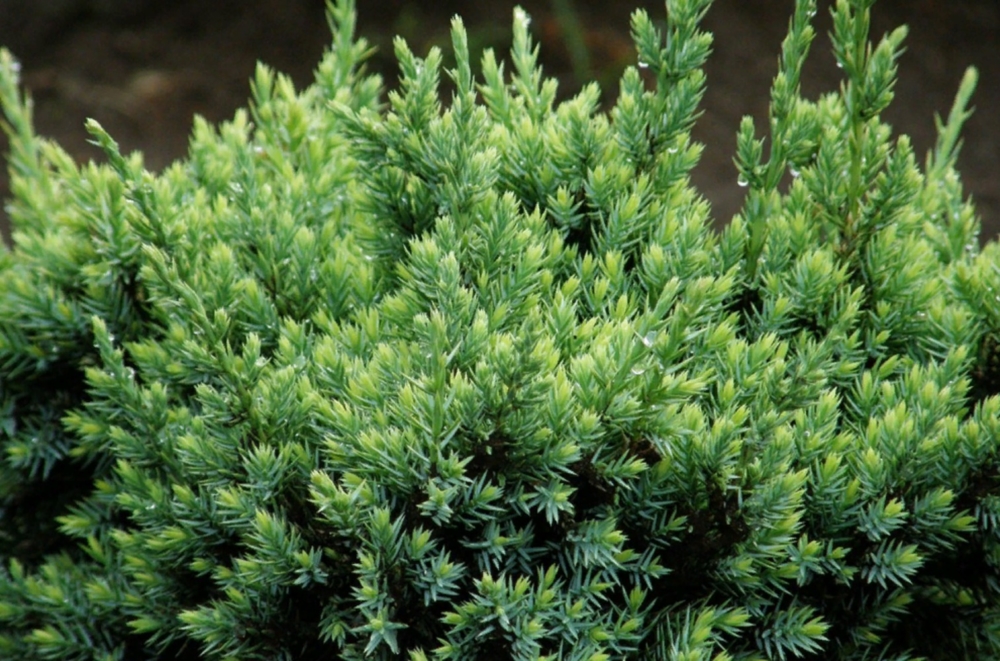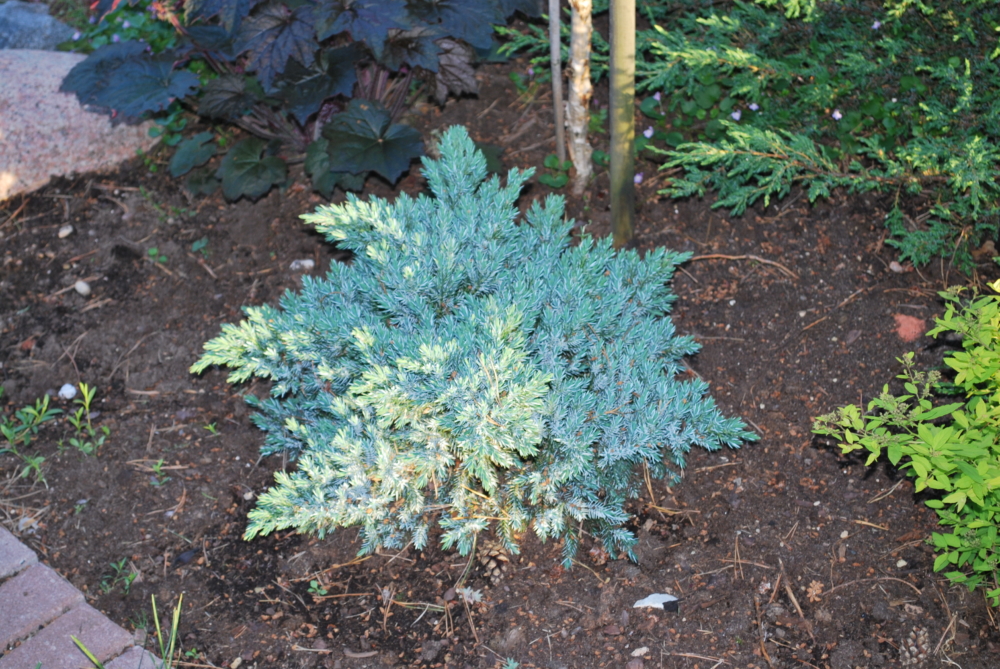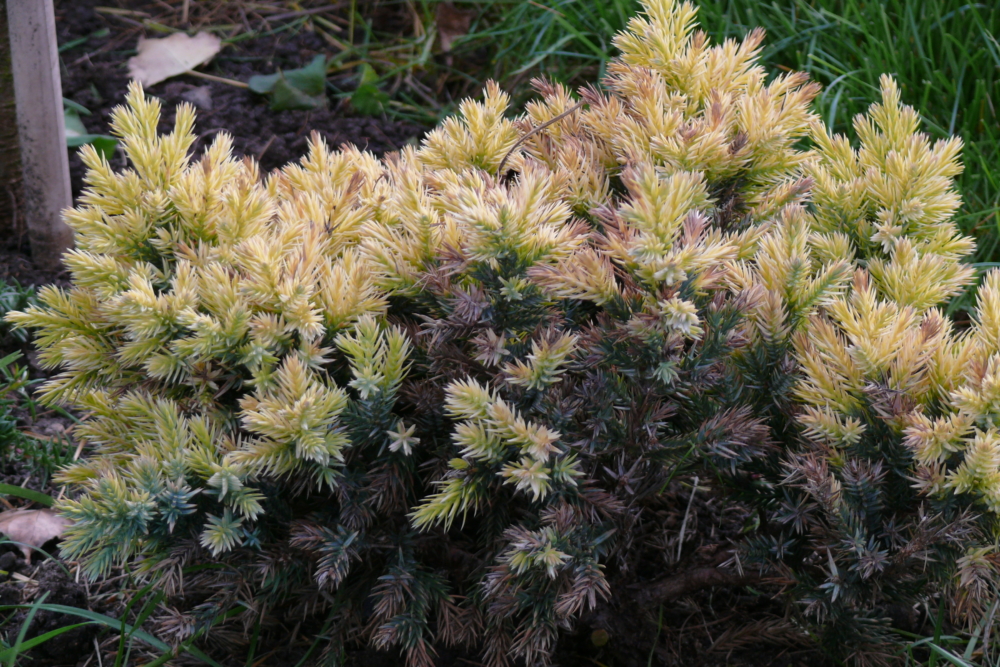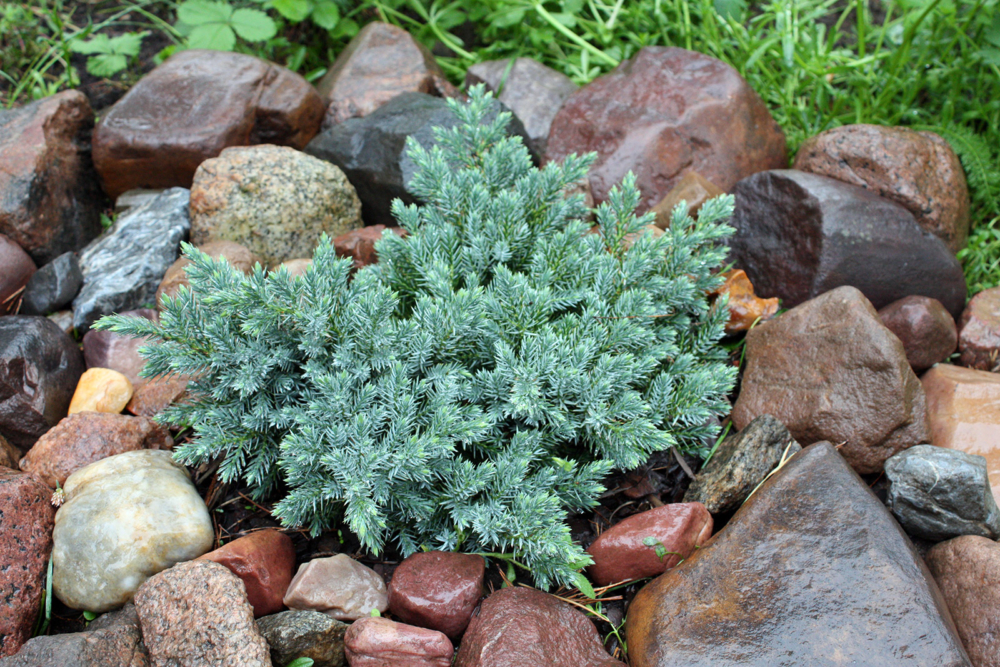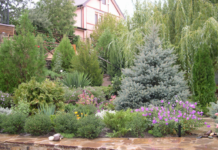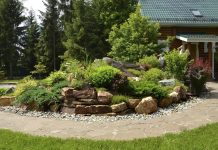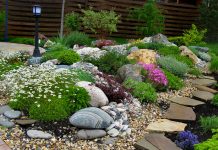Beautiful evergreens occupy a worthy place in the landscaping of suburban areas. Scaly juniper attracts attention not only with its beauty, but also with various colors.
Material Content:
Scaly Juniper Description
Description of the species: known as Juniperus Squamata and is part of the cypress family.
This is an evergreen shrub. On the branches of the female type, black shiny cone berries develop, ripening by May of next year. Spikelets form on the male branches. The needles of average length of 5-8 mm, located 3 things in whorls. Wood is not susceptible to rot, the plant is drought tolerant, grows on any soil.
Decorative varieties
Often used in landscape design. The most common varieties:
- “Blue Star” is a stunted bush. With thick branches creeping on the ground. Young shoots have a bright turquoise color, with age it changes and becomes bluish-blue. It does not grow rapidly: by the age of 10 it rises up by 0.5 m, the diameter reaches 2 meters. The needles resemble silver-blue scales. Cones are blue. Photophilous, does not grow in waterlogged and saline areas. It easily tolerates temperature changes, wind, drought. It will be a wonderful addition to a rock garden or rocky garden. Often used for landscaping loggias, terraces, balconies, roofs.
- The scaly juniper “Blue Carpet” (Blue carpet) is an undersized creeping variety. Has drooping shoots. Her crown is flat and wide. Shade of needles gray-blue. Cones are dark blue, with a waxy coating. The variety tolerates partial shade, adapted to urban ecology. They are landscaped with roofs and balconies.
- Dream Joy is a dwarf species of shrubbery. Pillow-shaped, flattened crown. Strongly branching long shoots grow asymmetrically. In spring, they are white and yellow, then become silver-green. The needles are thin and small. It is used in the design of rock gardens, coastal zones of reservoirs, heather gardens. Soil prefers sour.
- "Holger" is a coniferous shrub with a spreading crown. The needles are hard and short, green with a white coating. At the ends of young shoots golden needles. The berries are dark blue with a gray coating. For 10 years it grows 1 m high, one and a half meters wide.
- "Meyeri" - the crown of the bush is asymmetric. The branches rise up, and the shoots fall down. By the age of 10 it grows up to 3-4 meters in height. The diameter reaches 2-3 m. The needles are prickly, silver-blue in color.
Scaly juniper looks good in combination with different plants.
Growing Features
The most favorite and frequently used juniper is Blue Carpet. Unpretentious, undemanding to soils. It grows quickly enough and takes a beautiful decorative look.
Do not forget that some species are poisonous. If you are not sure, trim with gloves. The berries are also poisonous; children should not be allowed to play with them or eat. Poisoning is very dangerous for its consequences, even death.
In cold winters, the bush can be damaged by frost. To prevent this from happening, it is covered with non-woven material, spruce branches, and snow. The film can not be used, it interferes with breathing. Before sheltering, leaves that have got there are carefully scrubbed out of the crown so that they do not rot and damage the juniper.
Outdoor landing
Propagated by seeds, cuttings, layering. It is better to grow seedlings from cuttings, and from seeds the planting material is of poor quality.
How to plant a young plant:
- juniper is best planted in treated soil. On the turf, it grows poorly;
- the landing hole is made not deep, but wide, because its roots are superficial;
- in the case when the soil is sticky, clayy, drainage of crushed stone or broken brick is arranged at the bottom of the pit. This will improve moisture permeability;
- the root neck is not buried;
- do not trample the earth around the root, it is enough to simply water and mulch;
- for two years after planting for the winter they shelter, in the summer they shade it with a plastic box with holes. This will protect the plant from sunburn.
When planting in the garden, a biohumus is mixed in a hole, mixed with needles from the forest and vermiculite.
It happens that it is necessary to transplant an rooted sprout or grown seedling. In this situation, proceed as follows: they dig it out with a large earthen lump and transplant it to the right place.
Adult plants do not like transplants and are poorly accepted. You can try to do this:
- Transplant in the fall.
- During the summer, dig a ditch around the bush deep on the bayonet of a shovel, backing 30-40 cm from the trunk. Small roots will be chopped, and roots located deep in the soil will be used for nutrition.
Over the summer, the roots of substitution will grow and take the form of a circle. Thanks to this, the bush will take root in a new place.
Important! Plants from the forest take root very poorly.
How to care for coniferous shrubs
Leaving includes watering, pruning, loosening the soil, weed control, top dressing.
Watered only with prolonged heat. An adult plant needs 1-2 buckets of water. Juniper responds well to moisturizing needles. This procedure is carried out once a week. The soil surface is regularly loosened, trying not to touch the roots, weeds are pulled out.
Top dressing is carried out in the spring, scattering 30-40 g of nitroammophoska along the perimeter of the trunk circle. Fertilizer close up and immediately watered. With poor soil, they feed regularly - once a month. Fertilizing conifers with animals is absolutely impossible. The roots will burn from it, the bush will die.
Juniper is trimmed if they want to give it some form. In this case, you must be very careful. The plant grows slowly, and with strong pruning it will recover for a long time. Experienced gardeners carry out a sanitary or thinning procedure. Sometimes clumsy sticking branches are cut.
Protection against diseases and pests
Like any other plant, juniper needs protection from diseases and pests. Often rust strikes him. Thickening in the form of a spindle is formed on all parts of the bush. In their place, the bark dries and crumbles, small wounds appear. Affected by rust, the twigs dry out, the needles become brown in color and also fall off. The fight against infection consists in pruning diseased branches and spraying 1% with copper sulfate. Sections are required to be greased with a garden var or other means of similar action. All dry material must be destroyed.
For prevention, the juniper is sprayed in spring and autumn with a 1% Bordeaux mixture. In addition to rust, other diseases appear on the bushes:
- branch bark nectriosis;
- biorell cancer;
- alternariosis and others.
The listed diseases are treated with 1% solution of copper sulfate.
Bushes can infect pests.
- Mining Moth. To destroy it, use Decis solution. 2.5 g of the drug are taken per 10 l of water. Processed 2 times with an interval of 2 weeks.
- Spider mites. Use a solution of karate. For 10 liters of water - 50 g of the substance.
- Shield. For 1 bucket of water - 70 g of Karbofos.
- Aphid. For 1 bucket of water - 2 g of Fitoverm. Spray twice with an interval of 14 days.
Timely prevention helps save plants and time.
Juniper in landscape design
Different varieties differ from each other. But if only coniferous shrubs are planted in your garden, the garden looks boring and monotonous. Bright annuals and perennials will give the site a unique character.
Compositions of juniper, clematis, roses, chrysanthemums, peonies look very attractive. They plant flowers 2 meters from coniferous bushes so that they do not block the sun.
The free space is filled with crushed stone or planted: clover, ryegrass, thyme, bryozoate awl-shaped. It can be mulched with nutshell, peat, conifer needles.
Near the pond you can plant colorful spirea next to the juniper. Decorate rocky areas with young growth, barberry, phlox. It is best combined with wildflowers or decorative flowers with small inflorescences.
Coniferous shrubs are unpretentious. They grow well and delight gardeners with their unique flavor.


